Three Days, Two Games, and a Lunchbox
A tribute to the extra innings games of yore, and a memoir of becoming a baseball fan.
Imagine if you will, a regular season baseball game that goes so many innings into the night that it must be suspended and finished the next day. This would never happen now, in the era of the automatic runner.1 It happened a long, long time ago in a place called the ‘80s.2
The year was 1981. George Argyros had just taken over majority ownership of the Mariners. It was the only season in his 9-year reign of terror in which he wasn’t actively trying to sell the team, bloviating about moving the team, or calculatedly tanking the season. He and his fellow major league owners did, however, push the players into striking in the middle of the season over disagreements about free-agent compensation.
The 1981 Mariners were 15 games under .500 when the strike began on June 12th. When play resumed two months later, on August 10th, they jumped out of the gate eagerly and won 7 of their first 10 games back. Then, they did what the Mariners do when you think they might be on to something; they lost 10 games in a row.
They broke the losing streak during the first game of a series in Baltimore, but dropped the next two games, including an 11-inning match in which both starters, Jim Beattie for the Mariners and Dennis Martinez for the Orioles, went 10 innings. The Mariners were certainly disheartened, if not downright frustrated, as they limped into Boston on September 3.
The disheartened Mariners took advantage of a Red Sox error and a wild pitch to jump to an early 3-0 lead. Although the Red Sox got a couple back, the Mariners put three more on the board in the fifth inning when Tom Paciorek chased starter Mike Torrez from the game with an RBI double, then Dan Meyer and Jeff Burroughs drove in two off his replacement, Bill Campbell.
Mariners starter Floyd Bannister3 went 5 innings and was replaced by Mike Parrott.4 Paciorek singled in another run in the 7th inning and Parrott cruised along in his relief outing, allowing only one run in the bottom of the 8th. The Mariners had a comfortable 7-4 lead with two outs in the bottom of the 9th inning. Then, the Mariners did what they do when you think they have a comfortable lead; they allowed Joe Rudi and Rich Gedman to tie the game. 7-7 at the end of regulation.
No matter, just score one measly run. Naturally, the Mariners did what they do when they only have to score one run; they played 10 innings of scoreless baseball. At either 1:09 AM EDT (per the Seattle Post-Intelligencer)5 or 1:16 AM EDT (per the Seattle Times)6, Rudi was once again at the plate with two outs, this time with two on in the bottom of the 19th. He flew out to end the inning. The score was still tied at the end of 19. American League rules prohibited starting another inning after 1 AM. They’d have to finish the game the next day.
I hadn’t been born yet when Rudi flew out to end the inning. But the failure of either team to score over those 10 innings would be a pivotal moment when I was developing my baseball fandom nine years later.
*****
I probably wouldn’t have considered myself a baseball fan at the end of second grade, although I was well on my way. The night before the last day of school I sat in my bedroom sobbing. Partially because I loved school and was sad it was over for the summer (I have been a nerd from the very beginning). Mostly because I was distraught because I had to turn in my second-grade reading book.
I can still remember the yellow-brown cover. The smell of the thick pages. The heft of the book as I flipped it open to my favorite story, the one about Roberto Clemente. I don’t remember if we read it in class, or if it was one of the stories we skipped that I read anyway. Either way, I was enthralled with the story about a famous baseball player who cared about people so much, he died trying to personally deliver earthquake relief to them. I read it over and over and over again, until that devastating day when I had to give it back.
I may not have considered myself a baseball fan when I turned that book in on the last day of school, but when I went back to school as a third grader, there was no doubt.
*****
The Mariners and the Red Sox got some sleep and resumed the game in the top of the 20th inning at 7:30 PM EDT. Once it concluded, they would begin playing their regularly scheduled matchup.
The rest must have done the Mariners some good. After Red Sox pitcher Bob Stanley induced two groundouts, Dave Henderson singled to left field. Joe Simpson came up behind him and promptly hit a triple into right field to give the Mariners the lead. They just had to get three more outs.
I’m sure by now you can guess what the Mariners did next. Their pitcher, Jerry Don Gleaton, got two quick outs then gave up consecutive singles to Rick Miller and Jerry Remy, followed by a walk to Dwight Evans. The bases were loaded and Jim Rice was coming to the plate.
Mariners manager Rene Lachemann had seen about enough of Jerry Don and plucked starter Jim Beattie, who had pitched 10 innings only two days earlier, from his depleted bullpen. Later Lachemann said that Beattie “wasn’t really ready, but he came in to face one of the top power hitters in baseball.”7 Beattie himself said, “I’m not familiar with a two-out, bases loaded situation in relief.”8
Ready or not, Beattie faced down Rice. The Mariners bullpen had failed to hold the lead eight times in the eighth inning or later in their last 14 games.9 Since the bullpen lost the lead in the ninth inning of this game the night before, Lachemann had been trying his hardest to raise the spirits of the players. “I had used Knute Rockne and Vince Lombardi. I haven’t been able to get a tape of Connie Mack. I talked to my brother (Marcel, a USC aide) about what Rod Deadeaux (the USC coach) says and that didn’t work. I even had Tom Pacioreck tell Tommy Lasorda stories.”10
Turns out, what the Mariners needed was a good, old-fashioned win.
Jim Beattie got Hall of Famer Jim Rice to ground out and end the game.
After 2 days and 20 innings, the Mariners had won a game.
The offensive player of the game, Joe Simpson, said, “I’ve never seen a club go through what we have. Maybe this will put us over the hump.”11
(And then what happened?)
(Shhhh, just let them have this.)
****
I have a glimmer of a memory of my first baseball game, sitting next to my sister in the 300-level of the Kingdome eating cotton candy. I think I was about 5. I don’t remember anything that happened during the game. In fact, I have no idea which game it was. But I remember the cotton candy, which is pretty much the highlight of any baseball game when you’re 5.
****
Let’s move away from the ‘80s to a place a little less of a long time ago, the ‘90s. The year is 1990. Ken Griffey Jr. is in his second year in the major leagues, Jim Beattie was their farm director, and they were still using the best logo in their history:
It’s possible I love this logo so much because that was the logo on the first batch of Mariners giveaways I collected. There’s something special about the first giveaways, before you realize how cheaply made they are, and how they really aren’t worth the hype. Before you know all that, they’re pretty great.
Like that lunchbox.
****
We always went to games against the Red Sox. My dad was from the Boston area and his baseball fandom developed when he’d take the train into the city with his dad. He always talked about how special it was to catch the first glimpse of Fenway Park, to walk inside and see the grass and the pristine field. A real baseball park, Fenway was, he’d always say. But I felt that same excitement driving across the I-90 floating bridge into Seattle. Seeing the first glimpse of the rippled Kingdome roof, making the trek up the ramps on the outside, catching the first blinding shot of artificially bright lights through the dark tunnels and the orange and red seats. There was always a glow, excitement, the smell of stale popcorn and indoor air.
Whenever it was on television, baseball was playing in our house. It was always a fact of my life. Though he was probably watching more Mariners games by 1990, my dad still insisted he was a Red Sox fan. He’d always sing “root, root, root for the Red Sox” during the seventh inning stretch and tell us all about how Boston was a real baseball town and the Red Sox were a real baseball team. I learned how to roll my eyes pretty early on. People used to complain that Red Sox fans became obnoxious after they won the World Series in 2004. I grew up with one and I can tell you with certainty, they’ve always been obnoxious.
My dad used to tell me I should be a Red Sox fan. My first act of filial rebellion was to dig in my heels and insist I was a Mariners fan.
*****
The summer after second grade, after I turned in the reading book with the Roberto Clemente story, I went to a game between the Red Sox and the Mariners. It was a special game to me then, and now. It was a game I was going to with just my dad. No siblings. Just me and my dad.
It was also lunchbox night.
I wasn’t the only one excited about the lunchbox, judging by the 30,000 people who filed into the Kingdome that night. As we made our way inside on August 11, 1990 and up the ramps, the giveaway lunchbox firmly in hand, I had no idea that I would walk out of the Dome an incontrovertible baseball fan.
*****
I have to pause here and thank Matthew Glidden for definitively figuring out which game this was. I’d been scouring the newspapers for mentions of a lunchbox night in the years 1988-1990. I came up completely empty, but I knew it existed. Matthew tracked down a pocket schedule on eBay and found the listing for lunchbox night. Thank you, Matthew, for finding that! This wouldn’t exist without your help! Matthew writes about baseball through baseball cards on his blog, which is worth a read.
*****
The night before, the Mariners bounced back from a sweep by the Yankees with a 4-1 win over the Red Sox. Randy Johnson threw 8 innings and Ken Griffey Jr. went 4-for-4, in a tantalizing glimpse of what was to be in a few more years.
I don’t have any memory of what happened during this game, and looking back I see why. The game was a scoreless snoozer until third baseman Edgar Martinez singled in Alvin Davis to score the first run in the bottom of the sixth inning. In the top of the seventh, Mike Greenwell took Bill Swift deep to tie it up, and there the score stood, 1-1 at the end of the ninth.
No score in the 10th inning, thanks to Ken Griffey Jr. making a “dazzling”12 diving catch with two outs. In the 11th, Wade Boggs scored for Boston on a Carlos Quintana groundout. The Mariners answered in the bottom of the inning when Scott Bradley singled home Mike Brumley with two outs. No score in the 12th.
At some point as the innings began to mount, my dad told me about a game the Mariners and the Red Sox played that lasted so long they had to finish the game the next day.
My kid brain was utterly enraptured by this idea. A game that lasted until the next day?! I took this to mean that if the game went long enough, we would get to sleep at the Kingdome.
In my understanding of the world that led me to this conclusion, there were two things that were true: 1.) You never a left a baseball game until it was over. You just didn’t. 2.) You had to go to sleep at night. Staying up all night wasn’t even a possibility. I pictured us snoozing, blissfully stretched out on the 300-level benches (incoming 3rd graders also don’t have any understanding of bad backs or the aches and pains that come later in life and could, in fact, sleep quite peacefully on an uncomfortable bench).
The players, of course, would sleep on the field at their fielding positions. I was imagining them, still fully dressed in uniforms and cleats, laying out a sleeping bag on the Kingdome Astroturf, removing their hats, and snuggling in for the night. The glaring lights would dim and we’d all have a big, jolly sleepover, wake up the next morning, and finish the game.
So, you can imagine the disappointment I felt when, as the clock moved ever closer to midnight, my dad told me we had to go home.
*****
I suspect it was during the scoreless 13th inning that we walked back to the car, parked under the Viaduct. Past F.X. McCrory’s and through Pioneer Square, the lunchbox thumping against my leg as I sullenly plodded along next to my dad. Along the way, we were stopped by a handful of people who asked what the score was.
“How do they know we were at the game,” I asked my dad.
“Because they see your lunchbox,” he said. And because there aren’t many kids hanging around Pioneer Square late at night.
Years later, he said the people asking us about the score were quite the characters and he kept thinking that we should have left earlier, this wasn’t a great situation for a kid to be in. I was oblivious, pouting about being forced to leave early.
*****
In the top of the 14th inning, Mariners closer Mike Schooler was in his third inning of work. With two outs, Dwight Evans slugged a two-run home run to put the Red Sox ahead. In the bottom half, Edgar Martinez, Scott Bradly, and Omar Vizquel went down on groundouts and the game finished the same day it began.
*****
I never used the lunchbox I got at the game as a school lunchbox. It was pretty worthless in that respect because it closed with a plastic tab that never stayed closed. I used it to store my baseball cards (I never got all that into card collecting, so my collection was pretty small) and it served that function until recently, when the plastic hinges had disintegrated to the point where the two halves don’t stay together and it’s just producing microplastic that will haunt the planet earth until the end of the universe.
When you’re a woman baseball fan you get the question a lot, “How did you become a baseball fan?” Men get this question too, but it’s of a different variety. Still, I’ve thought about that, how DID I become a baseball fan? My dad was a big fan and it was always part of my life. It was the 1995 Mariners and that magical run that came right as I was a teenager and predisposed to becoming obsessed with things. It was the night my dad woke me up to watch Chris Bosio finish his no-hitter, the first time he ever rooted for the Mariners over the Red Sox.
It was that night during a long extra inning game when he told me about a game that happened before I was born and it captured my imagination. There wasn’t really one thing that turned me into a baseball fan, but looking back, I think about that summer between 2nd and 3rd grade, when I was devastated to return the book with the story about Roberto Clemente and I was devastated to leave a game early, and I see that’s where it all took firm root. Everything that came after built on that summer.
It’s been 12 years now, this week, since my dad died. It’s only been this year that I wanted to find the lunchbox game. I’ve noticed when I research things I remember that memory is a tricky thing. I’ve been astonished by the tiny details I remember perfectly, and flabbergasted at things I remembered incorrectly. I was always hesitant to look at it too closely, to lose the memories I’ve treasured. But that didn’t happen.
Instead, I saw the roots of everything that came later, all starting with a 20-inning game that was played before I was born.

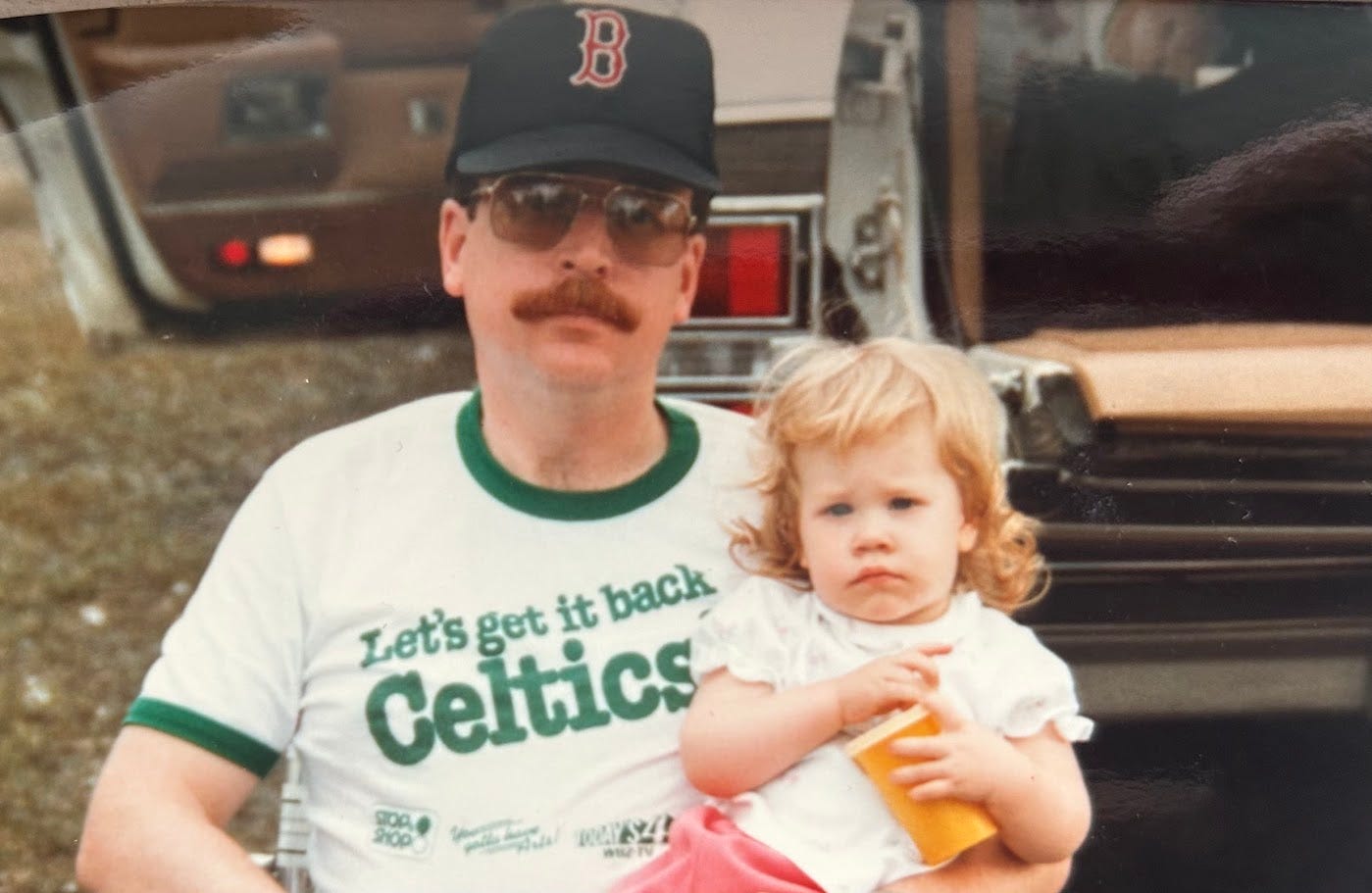
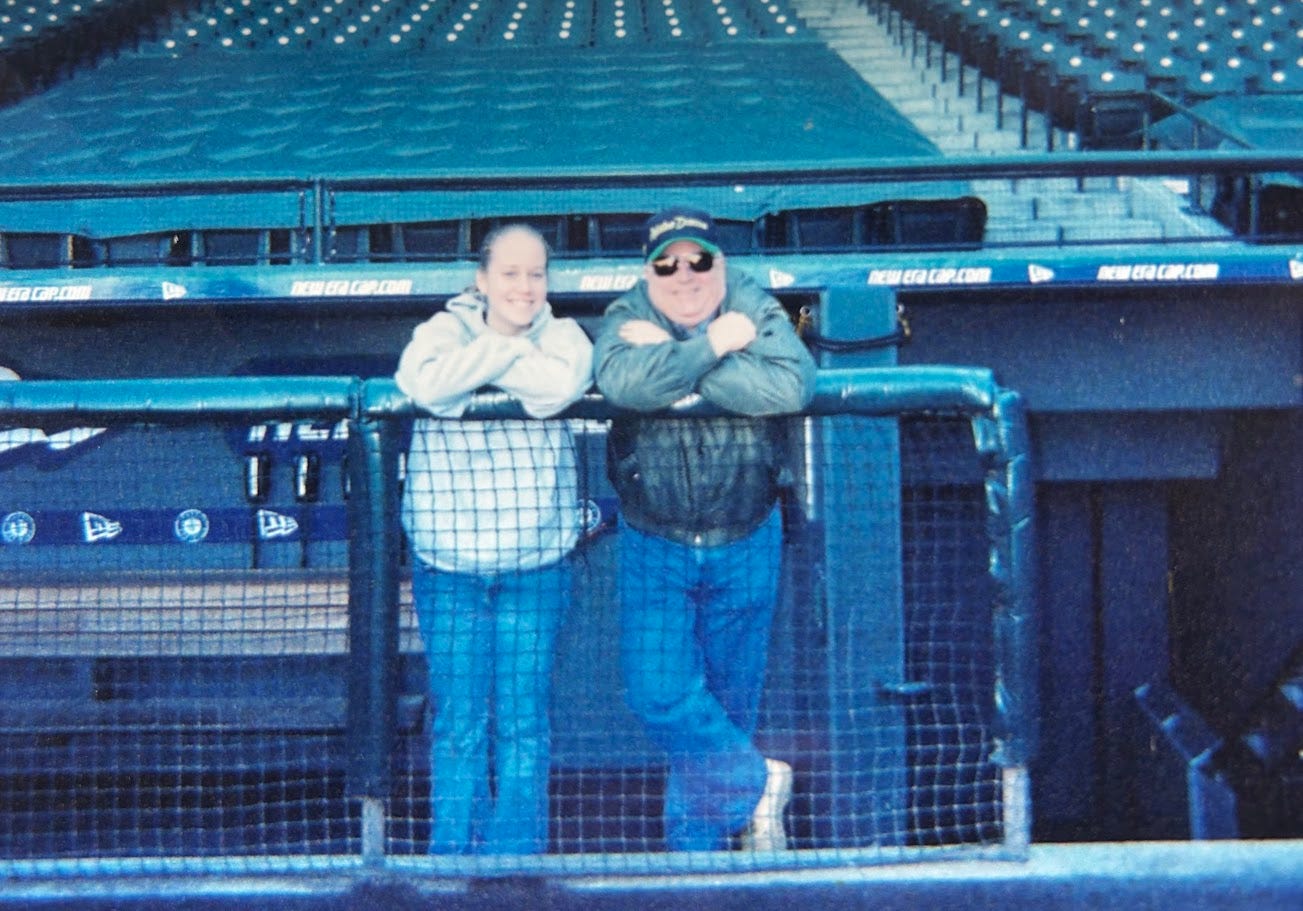
The Pilots Also Played 20 against the Sox
The longest game in Seattle Pilots history was also against the Red Sox. This one took place on July 27, 1969 at Sicks Stadium in Seattle. In that one, the Red Sox broke a 2-2 tie by scoring 3 runs in the top of the 20th. Tommy Harper answered with a solo home run for the Pilots in the bottom of the 20th, but it wasn’t enough and the Pilots lost 5-3.
Jim Bouton wrote of the game in Ball Four (it’s illegal to mention a Pilots incident without referencing what’s written in Ball Four about it):
I pitched two scoreless innings, the tenth and eleventh, which means I had another chance to win. It may also mean I’ll get into more games at crucial points. But if it takes twenty-inning games to do it, I’m still nowhere.
It’s fair to say Bouton wasn’t caught up in the magic of absurdly long games.
Longest Games in Mariners History
The 20-inning 1981 game in Boston was then the longest game in Mariners history and the longest game in Fenway Park history according to the Seattle newspapers at the time (I have not independently verified this). So, how does it rank in Mariners history now, 40-some years later?
April 13, 1982: 20 innings at California (6 hours, 6 minutes)
September 3, 1981: 20 innings at Boston (6 hours, 1 minute)
August 1, 2000: 20 innings vs Boston (5 hours, 34 minutes)
June 24, 2004: 18 innings at Texas (5 hours, 47 minutes)
September 18, 2012: 18 innings vs Baltimore (5 hours, 44 minutes)
Postseason: October 15, 2022: 18 innings vs Houston (6 hours, 22 minutes)
Henry Kissinger, Richard Nixon, and Baseball Owners
Notorious war criminal Henry Kissinger finally croaked last month. The New York Yankees released a statement mourning his death because, of course, he was good friends with George Steinbrenner. This took me down a rabbit hole of learning all about Steinbrenner, which I’ve mostly tried to avoid in my life. Suffice it to say, it’s good to be rich in America, you can get away with anything.
Around this time I was scouring newspapers for mentions of a lunchbox night and came across mentions of Mariners owner George Argyros being visited at Mariners games by his buddy Richard Nixon. Yep, that Richard Nixon. What’s a little undermining of democracy between friends? Over the years, Argyros was involved in finance and fundraising for the Republican Party and, as a reward for his work, was named Ambassador to Spain during the George W. Bush administration. Argyros wasn’t on the same level as Steinbrenner with the crimes and the political buddies, but then, who was?
It is not a ghost runner!! Did you people who call it that never play baseball in your backyard, or, in my case, the middle of the street with only a handful of kids to fill out two teams?! Pedantry aside, I do enjoy calling it the Manfred Man because I think of the band Manfred Mann and that insipid song they covered about wanting to hit it with some woman walking down the street singing nonsense. Like the automatic runner, I hate that song so much it causes me physical pain whenever I’m exposed to it, so the Manfred Man it is.
This was the ‘80s, man, there were no helmets! It was a wild place. Trampolines had no nets, your mum wrote your name on everything, BMX seats were high, music was on cassettes, and skids were big.
(If you know what this is from, we can be friends.)
Floyd Bannister always makes me think of the Nirvana song “Floyd the Barber”, for which I’m sorry to Floyd Bannister.
Mike Parrott was in the last year of his career, coming off a terrible 1980 season when his record was 1-16 and he earned the distinction of being the first in an oddly long string of Mariners players to suffer testicular injuries on the field. That sucks a lot for him, but he looks cool in this picture:
Ringolsby, Tracy. “M’s go 19 innings, stopped by clock.” Seattle Post-Intelligencer (Seattle, Washington), September 4, 1981: 19.
Zimmerman, Hy. “M’s longest game: More coming.” Seattle Daily Times (Seattle, Washington), September 4, 1981: 39.
Seattle Daily Times (Seattle, Washington), September 5, 1981: 43.
Seattle Daily Times (Seattle, Washington), September 5, 1981: 43
Seattle Post-Intelligencer (Seattle, Washington), September 5, 1981: 9.
Seattle Post-Intelligencer (Seattle, Washington), September 5, 1981: 9.
Seattle Daily Times (Seattle, Washington), September 5, 1981: 43
SHERWIN, BOB. "RED SOX OUTLAST M'S IN 14." THE SEATTLE TIMES, August 12, 1990: C1.



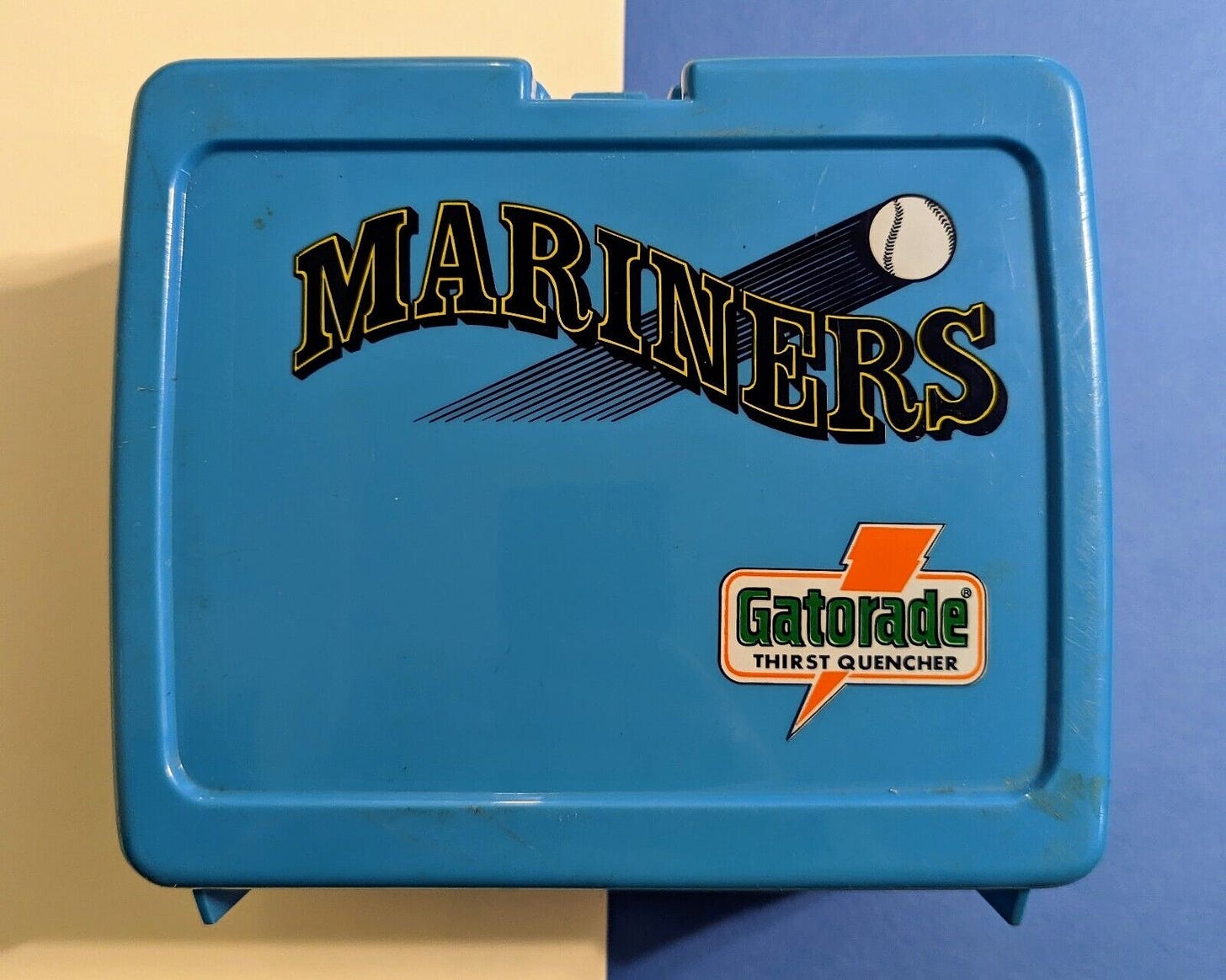
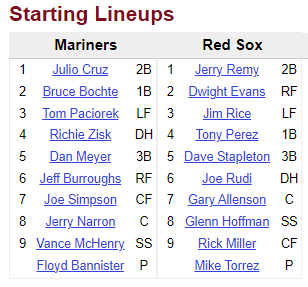
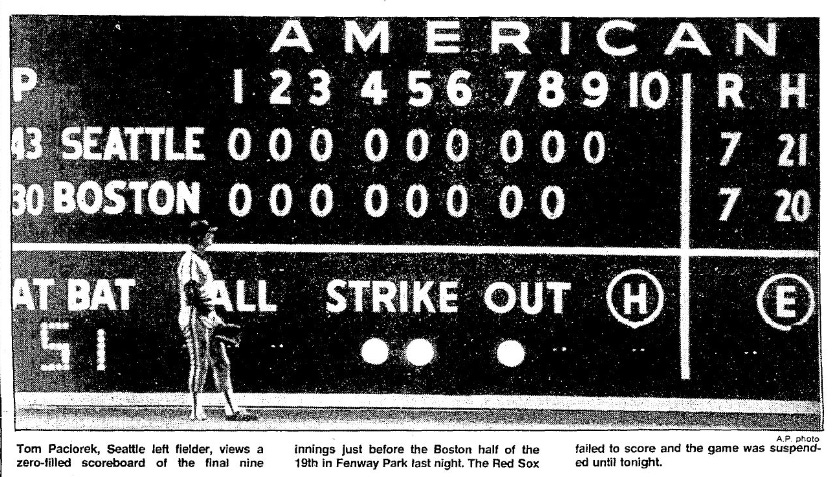
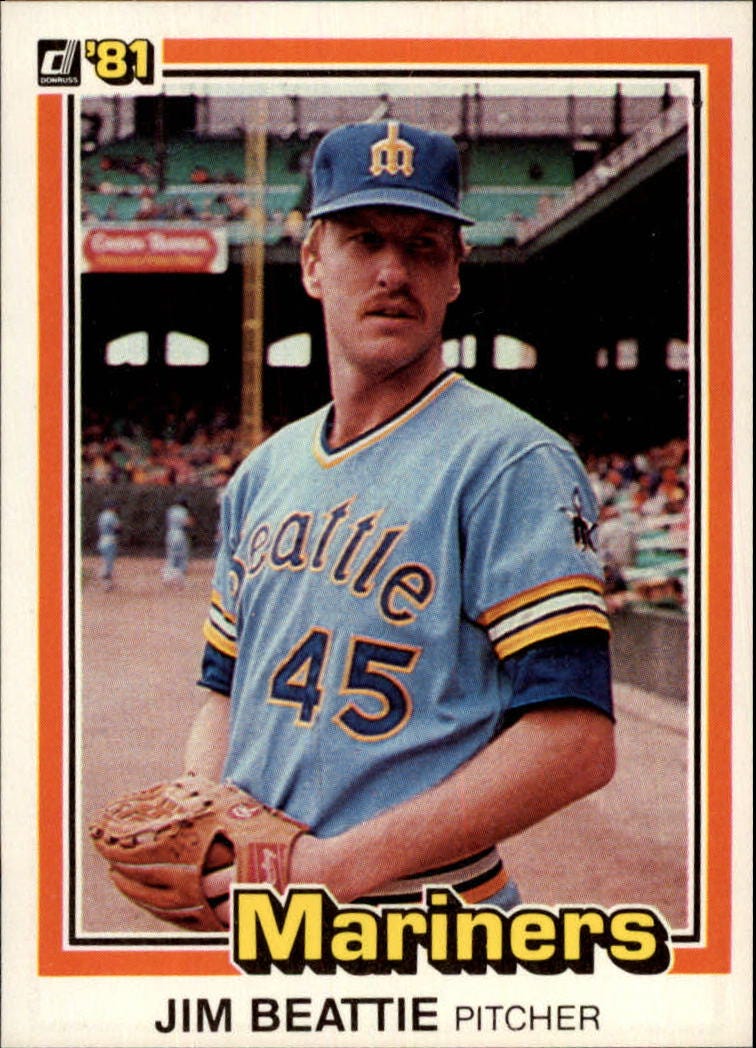
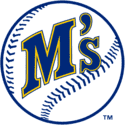
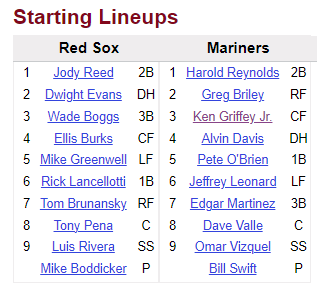
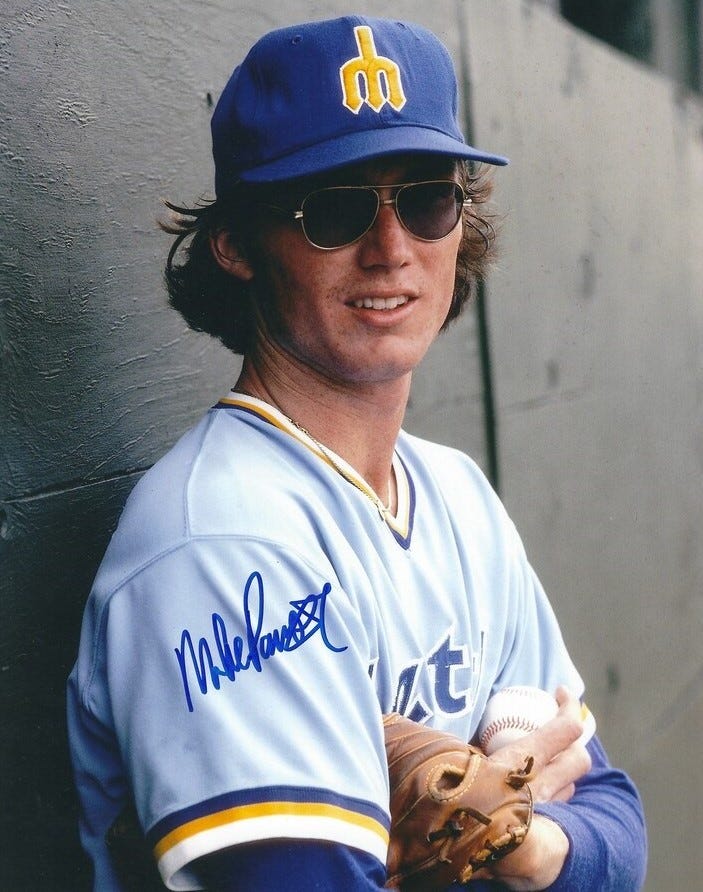
Not only did I remember guys reading this one, I met some guys (hi, Vance McHenry!)
The idea of sleepovers at the Kingdome brought back a memory from when I was just becoming a baseball fan.
I remember being astonished as a kid to read that Rene Lachemann had actually lived for a short period of time, maybe a couple of weeks, in the Kingdome clubhouse.
To live in a *domed stadium* sounded like the most phenomenally cool thing in the world -- almost cooler even than managing a major-league team.
(I read about it in one of those annual guides to MLB, but have also found news clips mentioning it from June 1981. Lach had replaced Maury Wills early in the season, and apparently he got caught between living arrangements at the start of the strike. Lach made a quip about how they weren't paying him as much as Billy Martin and Ralph Houk made, so he had to save money on lodging. I'm sure that endeared him to management.)
Anyway, this post was great, and thanks for writing it.
This was incredible, I'm so happy to see you have such happy memories with your dad and your early baseball fandom.
Thank you very much for this story :')